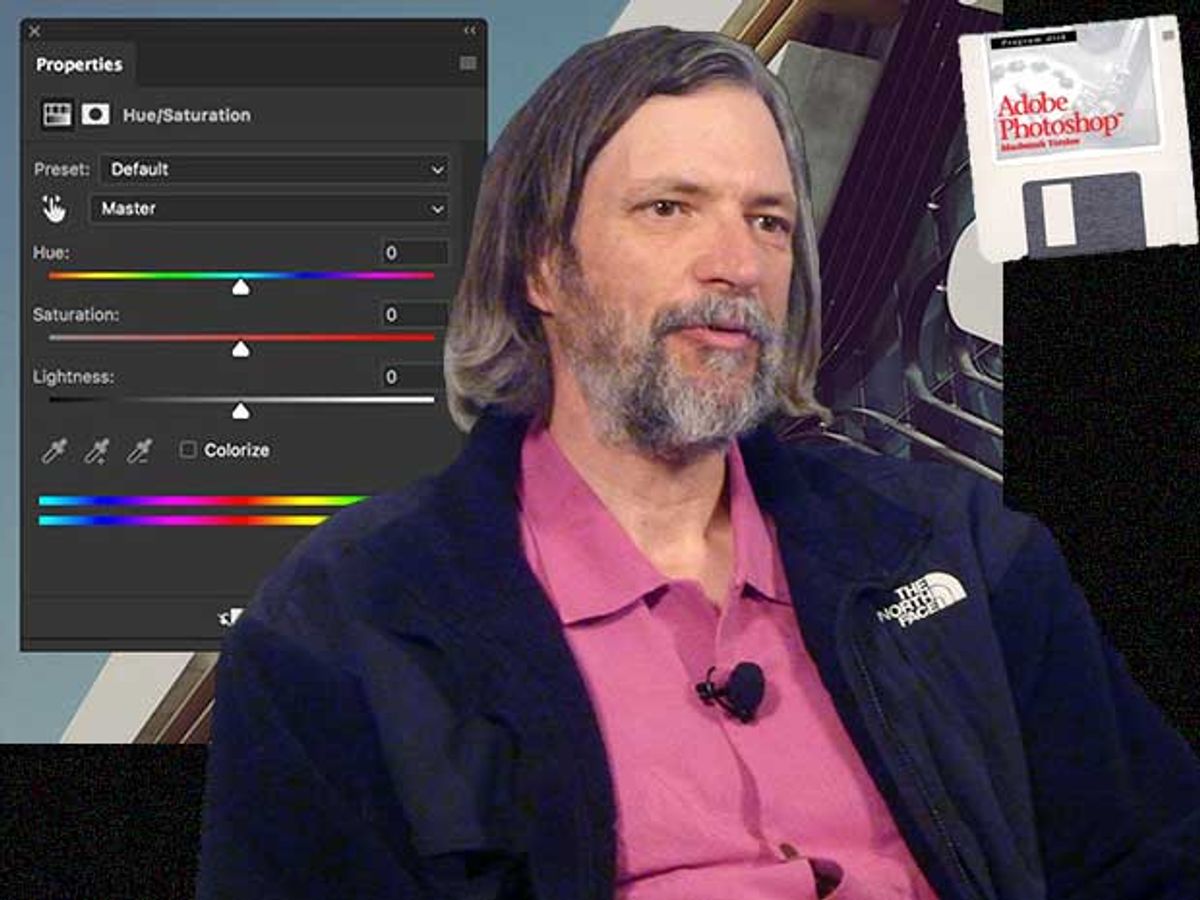It’s been 30 years since software engineer Thomas Knoll, with the help of his movie-industry brother, started creating the technology that would become Photoshop. Knoll, now an Adobe Fellow, answered a few questions this week about the origins of his photo editing software and its more recent evolution. Speaking at a preview of a new exhibition at the Computer History Museum, intended to raise the profile of software engineers and their contributions to society, Knoll had this to say:
On creating Photoshop and the power of procrastination:
“It started out as a hobby project. I was working on a PhD, but I hated the process of actually writing research papers. Creating all that text didn’t seem interesting compared to writing computer software that actually did something, that wasn’t just dead words on a page. So I was procrastinating by working on this fun project to move pixels around. I showed this software to my brother, he came up with suggestions of things to add to it. That went on for several months. Then my brother had idea; maybe we could sell this. I discouraged him, it’s a huge task to ship a software application, I was just one programmer working on it, but he said he could show it around. Eventually, he found Adobe, and they agreed to publish it. I never had the plan of creating what it became.”
On Photoshop today:
“I wrote every line of Photoshop 1.0. But now it is 100 times the size of version one, and there are huge sections that I don’t even know how to use. Now, however, the Photoshop versions coming out that run on tablets and phones are interesting, because a lot of the programming techniques I had to use in version one [because of hardware limitations] have had to be reintroduced to get Photoshop on these smaller devices.”
On Fake News:
“Any tool can be used for good in the world and for not so good in the world. It falls back to the users of the tool and consumers of information— a lot of stuff you can do with Photoshop was possible before.”
On the transition of the software update model, from packaged new releases to subscriptions:
“Engineers [working on Photoshop] were very much in favor of the transition. Previously, they had to come up with new features every two years, and these features had to demo well, because you had to convince someone to buy a new version based on those features. Then some percentage of user base would upgrade, some wouldn’t, so we had to support multiple versions with bug fixes and adding new camera support. The new model encourages users to stay current with the newest versions of software, and engineers like that because when they create a feature it gets to users right away.
“It also changes incentive for engineers. Previously, the incentive was to create features that demo’d well. Now the incentive is to create features people actually use and don’t want to do without. I think it’s a better incentive to have engineers making a product more valuable to its users than to make eye candy for a demo.”
On the celebrity—or lack of celebrity—of software engineers:
“It’s amazing to walk into any bookstore in the country and see the Photoshop bookshelf—that I’ve created a big enough impact to justify that much shelf space. But at the same time, it’s nice to go through life fairly anonymously, and not be a celebrity; to walk into a local restaurant and not be mobbed. I don’t want to become a movie star. I’m happy with the status quo.”
Tekla S. Perry is a former IEEE Spectrum editor. Based in Palo Alto, Calif., she's been covering the people, companies, and technology that make Silicon Valley a special place for more than 40 years. An IEEE member, she holds a bachelor's degree in journalism from Michigan State University.



